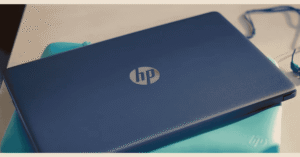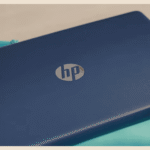Laptops fit a unique place in our daily lives, balancing the power, portability, and utility spectrum. To make the best choice, it’s crucial to understand the essential features of a laptop and how they can meet individual needs, whether for work, study, or leisure.
Definition of a Laptop
A laptop, often called a notebook, is a portable computer with all the essential components, like the screen, keyboard, storage, and processing power, packed into a single compact design. Since the history of laptops began, they have continually evolved to offer greater performance, enhanced portability, and more user-friendly features.
Importance of Understanding Laptop Features

Learning the features of a laptop can make the decision process way easier as prospective users can identify the specs in-line with their exact needs. Once you know the new features that best fit your needs, you’ll be able to make the right decisions regarding performance, design and features so that you don’t regret your investment months down the line.
Design and Build Quality
A laptop’s design and build quality greatly impact its durability, weight, and overall aesthetics. Modern laptops come in various styles and are crafted with materials that prioritize functionality and design.
Materials Used in Construction
The construction of laptops can vary, ranging from plastic cases to more premium materials like aluminium or magnesium alloys. Metal finishes offer a sleek look and enhance durability, making laptops resistant to minor knocks and scratches.
Weight and Portability Considerations
Weight is one of the main factors being weighed when looking for a portable device. A lightweight laptop is the best option for people who are always travelling, like students and working professionals who have to carry their laptops frequently. It is common nowadays to find ultraportable laptops under 3 pounds and weighing less than 3 pounds brings CUDA relevance to the essential features of a laptop as well.
Aesthetic Design Elements
Today, laptops are available in various aesthetic designs, from colour options to slim bezels. Some models focus on a minimalist look, while others prioritize bold designs and customizable RGB lighting, appealing to gamers or creative professionals. Choosing a laptop that reflects personal style can enhance the user experience, making it enjoyable to work or play on.
Performance Specifications
The performance of a laptop is determined by its core specifications, including the processor, RAM, and storage. Knowing these components allows one to be able to make the appropriate computations which suit the purpose ranging from simple to complex applications. Explore components of a laptop.
Processor Types and Their Impact on Performance
The laptop central processing unit (CPU), or the processor as it is also called one of the most important part of a laptop that determines how fast the laptop is and also the connection capability. As there are many developers of processors, Intel and AMD processors are the most popular with Intel Core, i3, i5, i7, i9 or the AMD Ryzen series. For those CPUs with higher specs, it is said that they are faster, which makes them ideal for multi-tasking, playing games, and using heavy software.
RAM and Storage Options
RAM (Random Access Memory) and the hard disk space are the other things that must be considered when purchasing a laptop, as these features affect the speed and the volume of stored information on the device. For standard use, such as the handling of everyday tasks – a 4GB or an 8GB RAM is installed in entry-level laptops. It is recommended to install 16GB or 32GB RAM for more serious and more taxing tasks. The storage available includes HDD (Hard Disk Drive) and SSD (Solid State Drive), the latter of which the reliable storage device is sought for its increased efficiency and faster startup speed.
Graphics Capabilities and Their Relevance
Graphics capabilities matter primarily for gaming, design, and video editing. Integrated graphics are common in most laptops, but dedicated graphics cards (such as NVIDIA or AMD) are crucial for tasks requiring higher graphical power. Future trends in laptop technology and design continue to enhance graphics technology, providing users more power in increasingly compact devices.
Display and User Experience
The display is a central feature of a laptop, as it influences everything from the viewing experience to productivity levels. The display quality, size, and resolution are key factors to consider.
Screen Size and Resolution
Laptop screens range from 11 to 17 inches, with popular options being 13 to 15 inches for a balance between portability and screen space. Resolutions like Full HD (1080p) offer sharp visuals, while 4K screens are ideal for professionals needing high-resolution displays for design or media work.
| Screen Size | Ideal Usage |
| 11-13 inch | Ultra-portable, students |
| 13-15 inch | Balanced performance |
| 15-17 inch | Media editing, gaming |
Touchscreen vs. Traditional Displays
Many laptops now offer touchscreen functionality, ideal for those who prefer intuitive interaction or use creative applications. Hybrid or 2-in-1 laptops combine the features of a laptop and tablet, allowing users to switch between modes. Traditional non-touch displays are often lighter and more energy-efficient, appealing to users prioritizing battery life.
Keyboard and Trackpad Quality
There’s no doubt that the quality of a keyboard and trackpad impacts comfort and productivity for the user. Typing for extended periods of time usually demands laptop devices that incorporate keyboards that are ergonomic with decent resistance and a backlight. Of course, a quick and responsive trackpad is also necessary for navigation particularly in touchpads with multi-touch functionality.
Importance of Selecting the Right Features for Individual Needs

With so many features of a laptop to choose from, it’s essential to focus on what will best support your primary activities. For instance:
- Students may prioritize portability, battery life, and affordability.
- Gamers will benefit from high-performance processors, dedicated graphics, and cooling systems.
- Professionals might require a balance between performance and design quality, often with a focus on storage and connectivity.
Selecting a laptop with the right combination of features is crucial for ensuring a smooth and enjoyable user experience.
Conclusion
The first step in picking a laptop is comprehending what features settle on a decent laptop for what you need. A laptop is not only about essentials like the CPU or the screen—neither is it only about being functional for portable use; there are design qualities too. Nowadays, people have a wide array of options to choose from, one that suits their individual or business requirements. Owing to how laptop technology continues to progress over time, never has a laptop been so powerful and portable while also being highly tailored to one’s needs. Learn more about types of laptops.
FAQ’S
Why are laptops sometimes referred to as notebooks?
The term “notebook” originated because early laptops were designed to be lightweight and portable, resembling the size and shape of a paper notebook. Why Laptops are Called Notebooks is rooted in this design concept.
What are the main components of a laptop?
The main Components of a Laptop include the processor (CPU), memory (RAM), storage (SSD or HDD), display, graphics card (if applicable), keyboard, and battery. These parts work together to deliver performance, storage, and user experience.
What future trends can we expect in laptop technology?
Future trends include advancements in graphics, more powerful processors, lightweight designs, and longer battery life, continually enhancing portability and performance.









